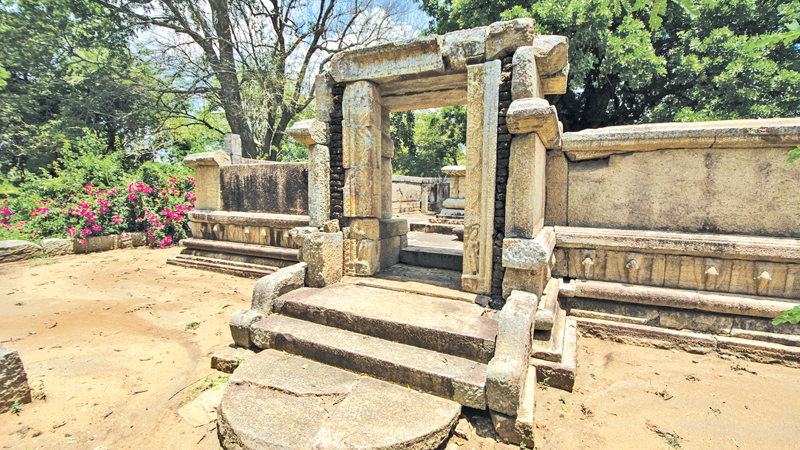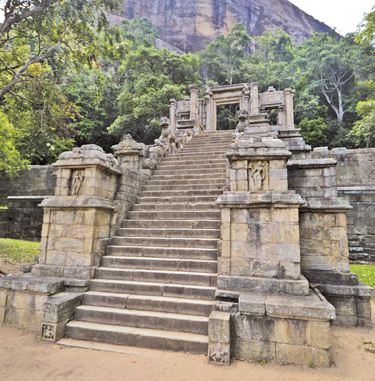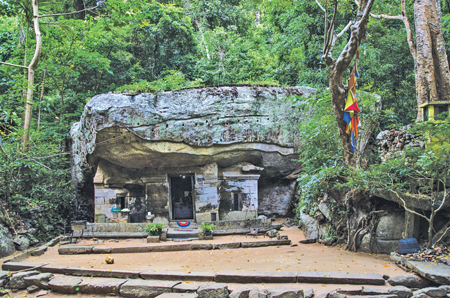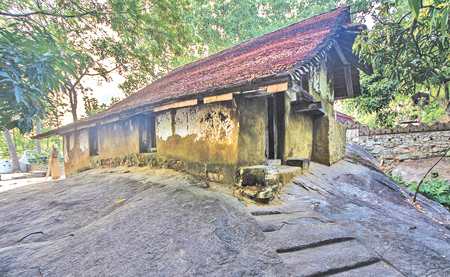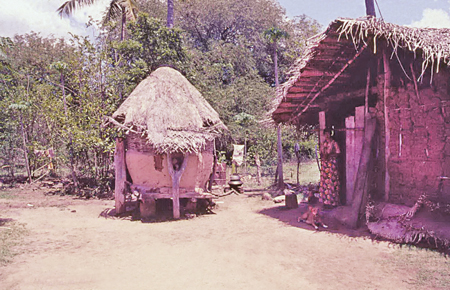A Journey to the Elephant Rock city-by Mahil Wijesinghe
Source:Sundayobserver
Kurunegala, the capital of the North Western Province, (Wayamba) has a historical name ‘Hasthihailapura’ (Elephant Rock City). It was the royal capital of Sri Lanka from 1293-1241 A.D. and is full of legend, romance and history.
Although it enjoyed the honour of being the royal city for a span of only half a century, the Kurunegala district had the unique distinction of being favoured as the choice of three other capitals – Paduwasnuwara, Yapahuwa and Dambadeniya, between the 12th and 14th Centuries; according to legend, Paduwasnuwara was also a capital in the pre-Christian era. It is not surprising, therefore, that the district teems with period architecture, sculpture and art, and is an archaeologist’s treasure trove.
Studding the entire province is a vast complex of ancient temples, rock cave shelters, forest hermitages and natural tanks which date back to the medieval kingdom of Anuradhapura. These destinations will keep you engaged for at least a whole week.
The most awe-inspiring are the colossal Buddha statues and other figures of the Buddhist pantheon, such as the magnificent Sasseruwa Buddha statue and as remarkable are the sylvan forest hermitage and the archaeological site of Arankele, rock fortress of Yapahuwa and many more.
My main intention was to visit the less travelled historical places scattered in vast areas of the Kurunegala district and photograph them. Today, some of these ancient sites lie in the dens jungle without human presence, and had been vandalised beyond recognition. I saw the pristine glory as well as the ruins of invaluable historical sites made of bricks and granite blocks. I spent a couple of days in Kurunegala, and Areankele was my first destination. Arankele is 24 kilometres North of Kurunegala, West of the Ibbagamuwa – Moragollagama road. Rays of sunlight filter through the silhouetted leaves of the forest and songbirds exercise their vocal chords at the highest volume as if to break the peace and tranquility of the surroundings.
At certain points, there are ‘roundabouts’ on the pathways, where those engaged in meditation could sit in contemplation. The roundabout outlined by large oblong stones, smooth and exquisitely chiselled, is a perfect circle. There are other short stretches for ‘sakman bawanawa’ or walking meditation. The environment is one of calm serenity and silence, except for the swish of leaves in the wind and the chattering of birds.
Denser forest
The bhikkhus who meditate here are in the denser forest, where we (being lay people) did not tread for fear of disturbing them; the forest surroundings afford them complete privacy from the noisy world. The sylvan surroundings of this hermitage are also home to archaeological findings. Arankele was supposedly the retreat of arahats and hermits, who, although having attained the piety and holiness requisite for attaining Nirvana refrained from acquiring it to help others walk on the Nirvanic path. Sage Maliyadeva, who- with his band of holy men – made Arankele his abode nearly 2,000 years ago.
Another rock close to Arankele is Yakdessagala, associated with the ancient legend almost 2,500 years ago when Kuveni, the native queen of Vijaya, the first king of Sri Lanka, shouted her curses and leapt to her death when deserted by him for an Indian Princess, as one story has it.
From Arankele, I went on to visit the Yapahuwa rock fortress that served as a 13 Century Sri Lankan capital. Unlike Sigiriya, the palace was not built on the summit of a 300- foot (91-metre) table-topped crag. Instead, two semi-circular walls and moats protected the royal palace complex, which stood on a ledge on the top of an ornamental staircase.
The stone ruins of these steps, almost in Cambodian style, are among the most decorative in the island, which rise abruptly from the plain on the outskirts of Maho.
Friezes of jubilant musicians and dancers decorate the stairs and the porch above them. To reach Yapahuwa, travel South from Anuradhapura on Route B63 about 64 kilometres to Maho, turn East and look for the massive rock to the South. Yapahuwa is also the home to the Chinese looking ‘Yapahuwa Lion’ stone sculptures which were reproduced in the country’s Rs. 10 currency notes in the past. Yapahuwa is also famous for its stone masonry craftsmanship of ancient sculptors.
The magnificent Panavitiya wooden Ambalama is another archaeological gem in the Kurunegala district – a beautiful ancient wayside rest hall, decorated with exquisitely carved wooden pillars and beams, dating from the Dambadeniya – Yapahuwa period.
Dambadeniya on the Kurunegala-Negombo road was a royal capital in the mid-13th Century, during three reigns, a span of over 50 years. Excavations have uncovered remains of the Temple of the Sacred Tooth Relic (housing the Sacred Tooth Relic was a prime royal duty in Sri Lanka), the royal palace, ponds and garden layouts, moats and city walls.
Passing Galgamuwa, we reached another sleepy forested village of Hettigama unique in character, Bodhigaraya at Nilakgama, the only one now extant, of a type of ancient shrine, a double platformed building constructed using massive stone blocks. On the upper platform stood a Bodhi tree enclosure. Conserved, small and exquisite, the Nilakgama Bodhigaraya stands as a tribute to art of Sinhala stone carvings.
Sasseruwa
Passing ancient tanks and paddy fields, we reached another historically important ancient site known as Sasseruwa or Resvehera situated majestically on a rocky mountain in wild elephant-infested Meegalewa, on the boundary of the Mahaweli System-H, overlooking the mighty tank of Kalawewa. This temple is 88 kilometres from Kurunegala (via Galgamuwa and Ahatuwewa). Here we saw an impressive and serene around 40-foot-high Buddha statue carved out of a single rock, resembling the more famous statue at Aukana. Ancient bhikkhus occupied nearly 100 drip-ledged caves which were scattered on the rocky hill of Resvehera between 3rd Century BC and 2ND Century AD. It is best known today for its rough-hewn Buddha image, carved from a sheer rock face. It is reached by a climb of 280 stone steps.
About three feet (one metre) shorter than the Aukana statue, it is cruder and less discreet in style. Some say it is a 5th Century prototype of the Aukana or the creation of an apprentice to the Aukana sculptor. Both are directly facing the old Kalawewa sluice.
The ancient rock cave temple of Kebellalena in Wellagala reached by a rock flight of steps, is believed to contain priceless wall paintings while its famous devale dedicated to God Suniyam is on a rocky hill amidst the coconut plantation in the outskirts of Wariyapola.
The Padeniya temple -24 kilometres from Kurunegala on the Puttalam road, has very ancient pre-Christian-era roots and well-preserved intricate wood carvings, wooden statues and paintings. An interesting feature here is the ‘Velipila’, a sandy slate on which pupils were taught the alphabet in ancient times. Another ancient architectural structure of the Padeniya temple is its library on a rocky hill used by bhikkhus. The library contains ancient ola-leaf manuscripts and Buddhist books.
In Ahatuwewa off Galgamuwa, we visited another historical rock cave temple called Dewagiri rock cave temple which is a repository of ancient mural art. The cave shrine of the temple comprises wall paintings belonging to the Kandyan period, now on the brink of vanishing due to the lighting of oil lamps in the cave.
Not far away from this temple, is the typical farming village in Ahatuwewa where the prosperity of agriculture prevails. When we entered the village, we saw straw thatched small huts in front of some houses. These are called ‘Wee Bissa’ (paddy container). These huts were used by most of the farmers to protect their paddy in the past. But unfortunately, today, these are vanishing sights and fast diminishing among the farming community in the area.


